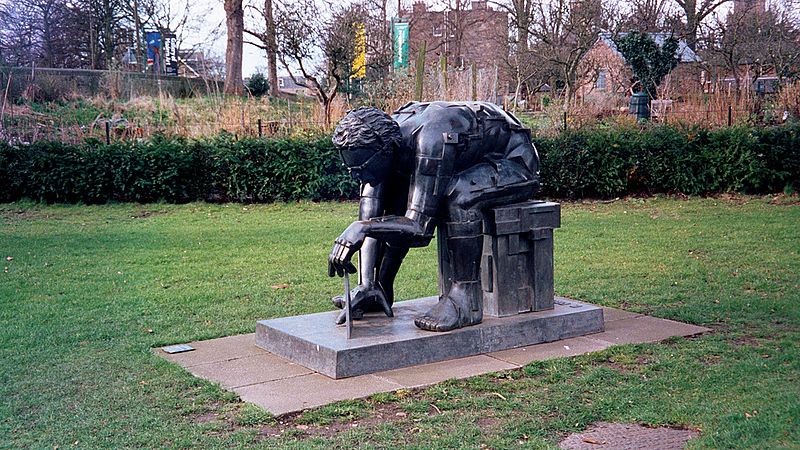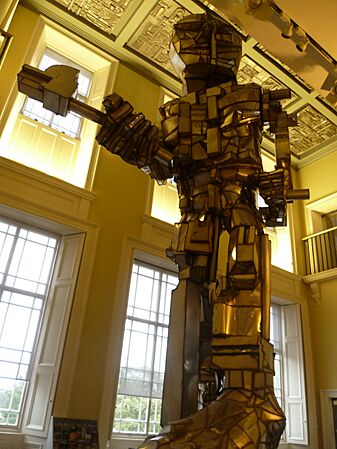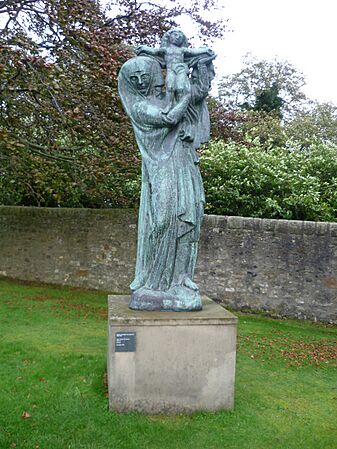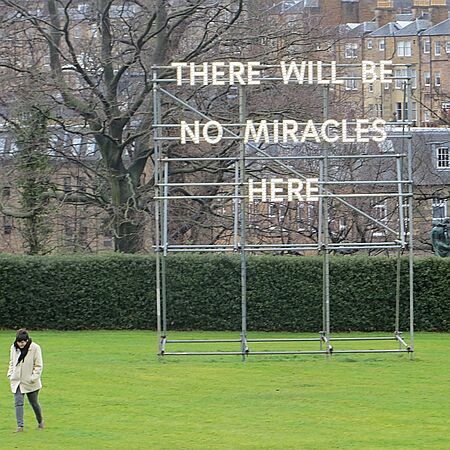Modern Two facts for kids
 |
|
 |
|
| Lua error in Module:Location_map at line 420: attempt to index field 'wikibase' (a nil value). | |
| Location | 75 Belford Road, Edinburgh, EH4 3DR |
|---|---|
| Type | Art museum |
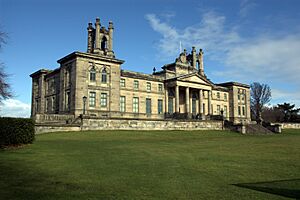
Modern Two is an exciting art gallery in Edinburgh, Scotland. It used to be called the Dean Gallery. This building is one of two places that make up the Scottish National Gallery of Modern Art, which is one of Scotland's main art galleries. The gallery is run by National Galleries Scotland. It has a partner building called Modern One, which is just across the road.
Contents
History of Modern Two
From Orphanage to Art Gallery
The story of Modern Two began a long time ago, in 1727. An Edinburgh merchant named Andrew Gairdner started a place to help children who didn't have parents. This was called an Orphan Hospital. The first hospital building was built in 1734.
Over time, the area around the first hospital became very busy. The building also started to get old. Because of this, the managers decided in 1828 to move the children to a new, healthier location. They chose a spot just west of the city, on higher ground.
The new building, which is now Modern Two, was designed by an architect named Thomas Hamilton. It was built between 1831 and 1833. The managers wanted a building that looked good in its important location. They also wanted it to feel welcoming, not like a workhouse or a prison.
Building Design and Features
The building was known as the Dean Orphanage. It took three years to build and was made from strong Craigleith stone from a nearby quarry. Its style is called English Baroque, with classic details. The tall towers over the staircases have chimneys inside. They are a noticeable part of the Edinburgh skyline.
The clock above the main entrance is very old. It came from the first Orphan Hospital. Before that, it was part of the Netherbow Port, an old gate on Edinburgh's High Street.
For many years, the building was used as the Dean Education Centre. Later, it was changed into the art gallery we see today. The small gardens at the entrance were started in 1940. Many school grounds were used for growing food during that time.
Becoming a Gallery
The famous architect Terry Farrell and his team designed the changes to turn the building into an art gallery.
The gallery first opened its doors in 1999. It was right across from the existing Scottish National Gallery of Modern Art. In 2011, the two buildings were given new names. The original gallery became Modern One, and the former Dean Gallery became Modern Two.
What You Can See at Modern Two
The Paolozzi Gift and Other Collections
Modern Two is home to the Paolozzi Gift. This is a special collection of artworks by Sir Eduardo Paolozzi. He was a very important Scottish artist. He gave these artworks to the Scottish National Gallery of Modern Art in 1994.
The gallery also has a large collection of Dada and Surrealist art and books. Much of this was given by a collector named Gabrielle Keiller. Modern Two also hosts different temporary art shows throughout the year.
Sculpture Garden
Outside Modern Two, there is a beautiful sculpture garden. You can walk around and see many modern and unique artworks. Some of the sculptures you might find there include:
- Gate (1972) by William Turnbull
- Two Lines up Excentric VI (1977) by George Rickey
- La Vierge d'Alsace (1919–1921) by Emile-Antoine Bourdelle
- There will be no Miracles Here (2007–2009) by Nathan Coley
- Master of the Universe (1989) by Eduardo Paolozzi
- Two Two-Way Mirrored Parallelograms Joined with One Side Balanced Spiral Welded Mesh (1996) by Dan Graham
- Macduff Circle (2002) by Richard Long
- Escaped Animals (2002) by Julian Opie
Images for kids
- Selected works at Modern 2
-
La Vierge d'Alsace (1919–1921) by Emile-Antoine Bourdelle


